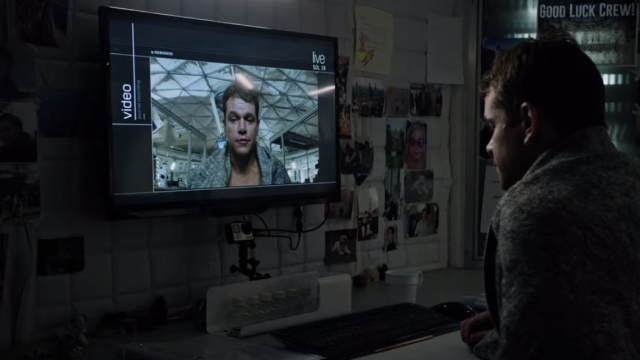Filmmakers have invented fanciful spaceship technology for more than a hundred years. But for The Martian, director Ridley Scott went the opposite direction: He asked actual space explorers to help them imagine the technology of the near future.
To make The Martian, which arrived in theatres this weekend, Scott asked NASA to advise the people who are normally in charge of only imagining what technology will look like in 200 years — from the film’s set designers to its graphic designers. Among them was Territory Studio, a motion graphics studio in London which produced the devices and user interfaces that you’ve seen in movies ranging from Ex Machina to Guardians of the Galaxy.
What resulted was an unlikely collision of worlds, bringing the professionals who are actually developing the technology that will be used to explore space together with the designers who are tasked with imagining what that technology will look like in film.
More Spreadsheets Than You’d Think
The screens and graphics you see Mark Watney using to communicate in the film are the result of a project that started in 2014, when Territory’s Art Director Marti Romances and its founder, David Sheldon-Hicks, took on the project.
What followed was months of emails and phone calls with specialists from NASA, led by Dave Lavery, Program Executive for Solar System Exploration at NASA. Lavery supplied Territory with mountains of data about the systems and interfaces that astronauts and ground control use during space flight, and made sure Territory’s depiction of NASA’s systems looked as realistic as possible.
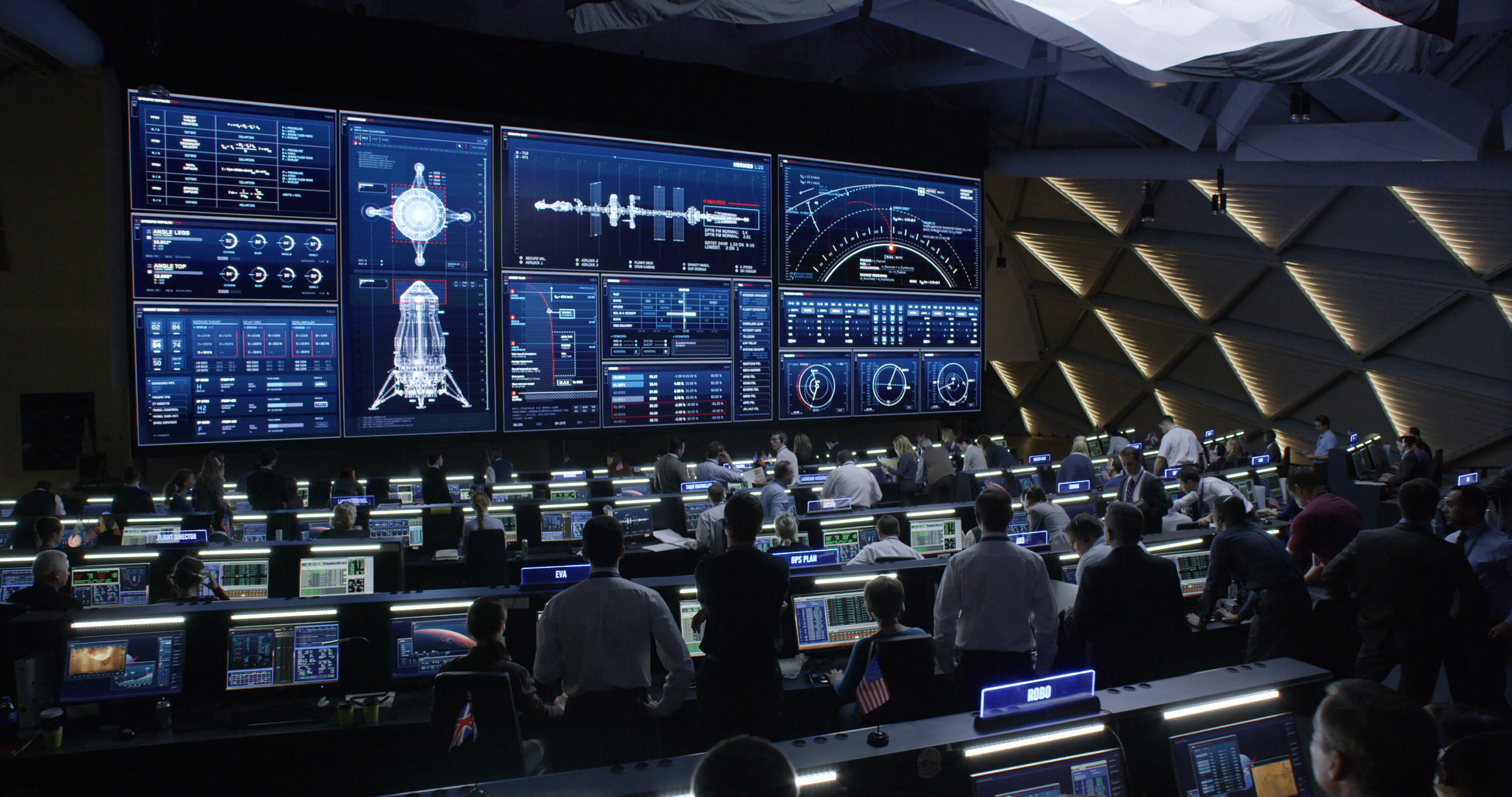
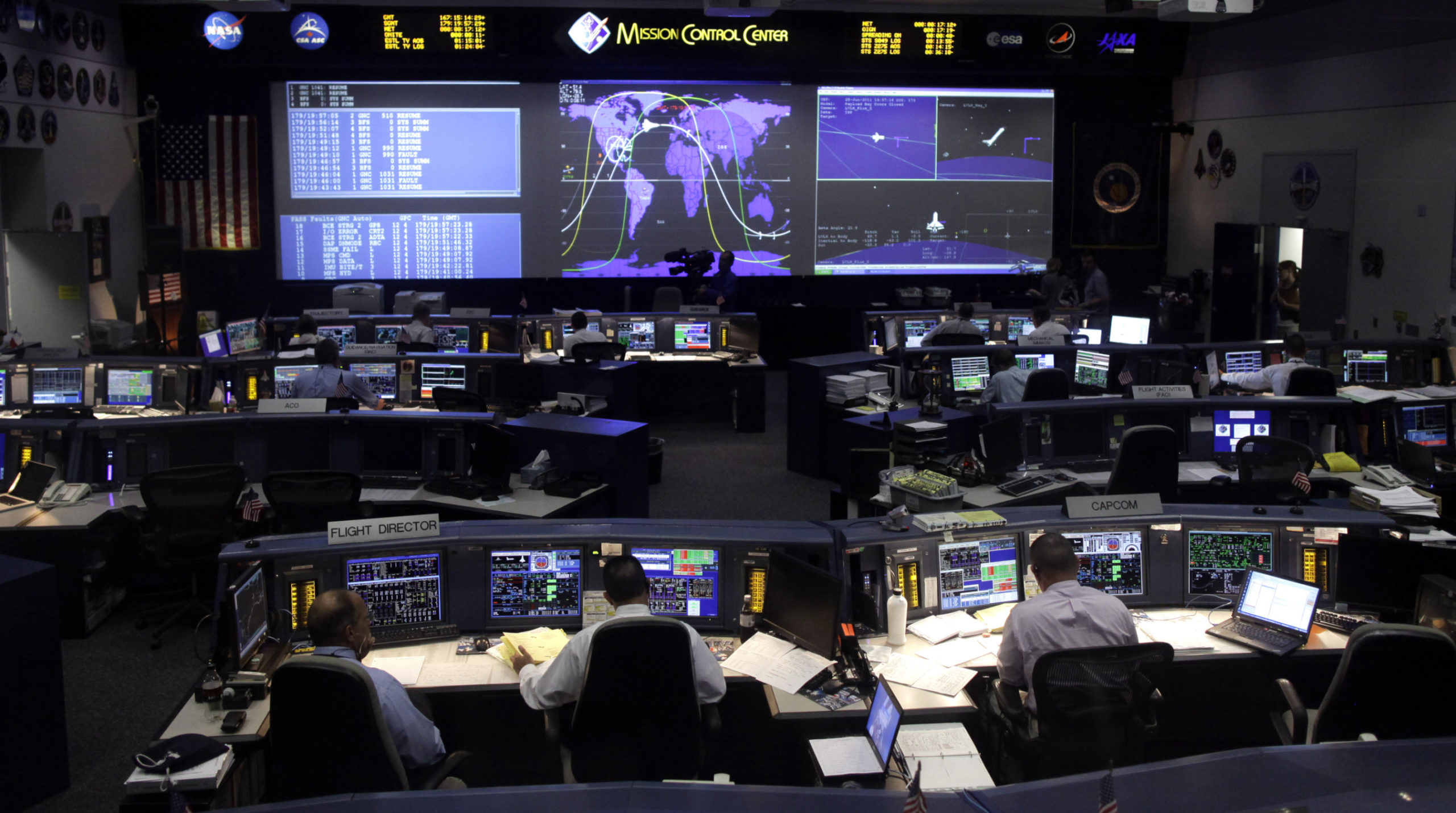
Mission Control in The Martian, versus NASA’s real Mission Control during a Space Shuttle Atlantis launch in 2011.
“Often, the criticism of the work we do — as a genre — is that it’s all very fantastical and not based in reality,” Sheldon-Hicks tells Gizmodo. “But to be speaking to astronauts and JPL engineers and having them give you all this data, and information, and research — I mean that’s just a dream.”
Lavery, who is leading NASA’s charge to explore the near solar system and who is team leader on the Curiosity mission, held nothing back — including the more mundane realities of aerospace engineering. “I hadn’t realised how much they rely on spreadsheets and calendars and schedules” to handle all the details of getting astronauts into space, Sheldon-Hicks says.
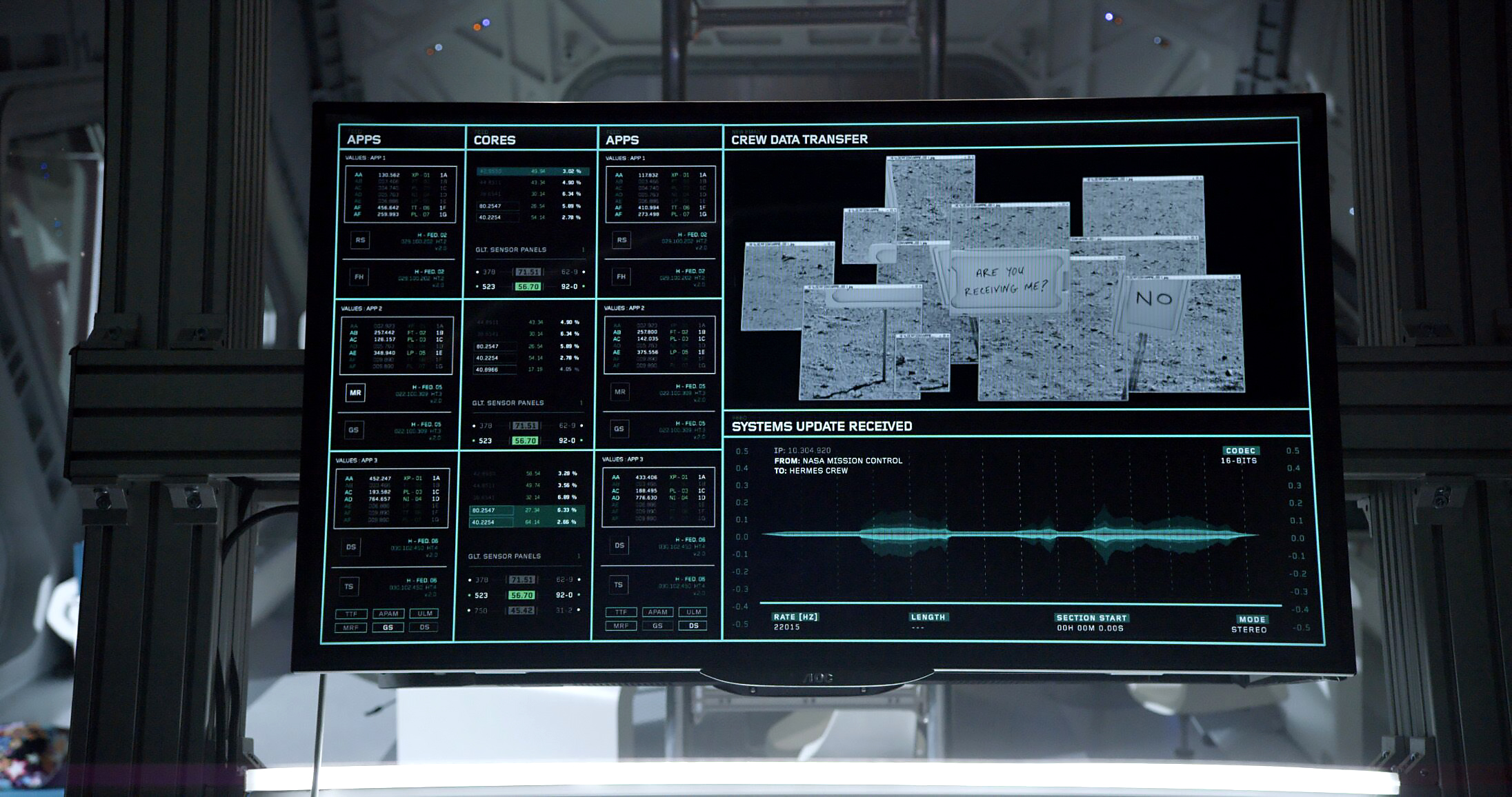
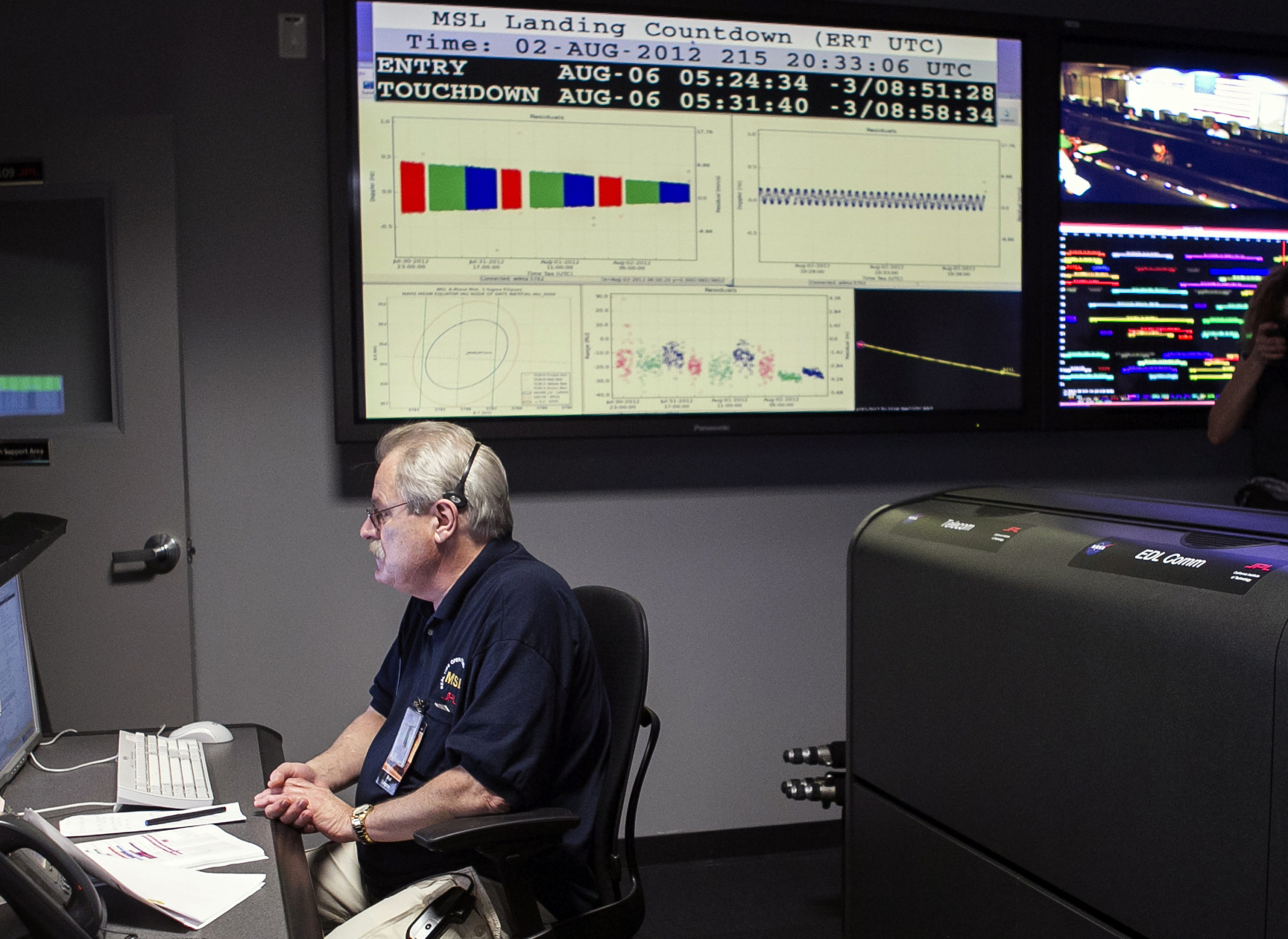
Mission Control Ace Brad Compton monitoring Mars rover Curiosity in 2012. AP Photo/Damian Dovarganes.
The whole point of the design of The Martian was to imagine what NASA will look like a few decades in the future, and as Romances says, “the best way to do that is knowing what NASA has right now.” Even if in some cases, that technology is “very, very ugly” — which is how Romances jokingly describes NASA’s rover interfaces.
Telling a Fictional Story With Real Data
In the hands of Territory, those spreadsheets and check-lists remained intact, but were re-skinned to help audiences better understand the storyline.
The DNA of NASA’s current approach to interface design is easy to spot in The Martian — just check out the real-life Mission Control, which is dense with data. But alongside all that real information from NASA, Territory embedded UI elements that any layperson in the audience could understand, from a section cut of the launch vehicle to a live feed of the launch site itself:
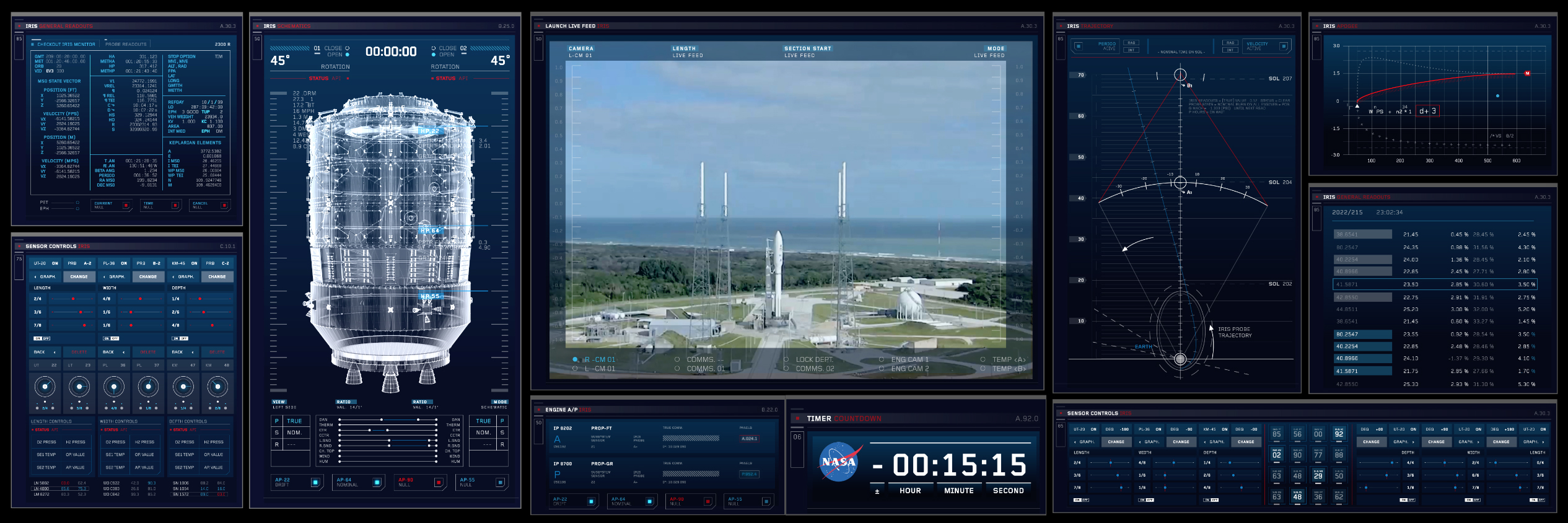
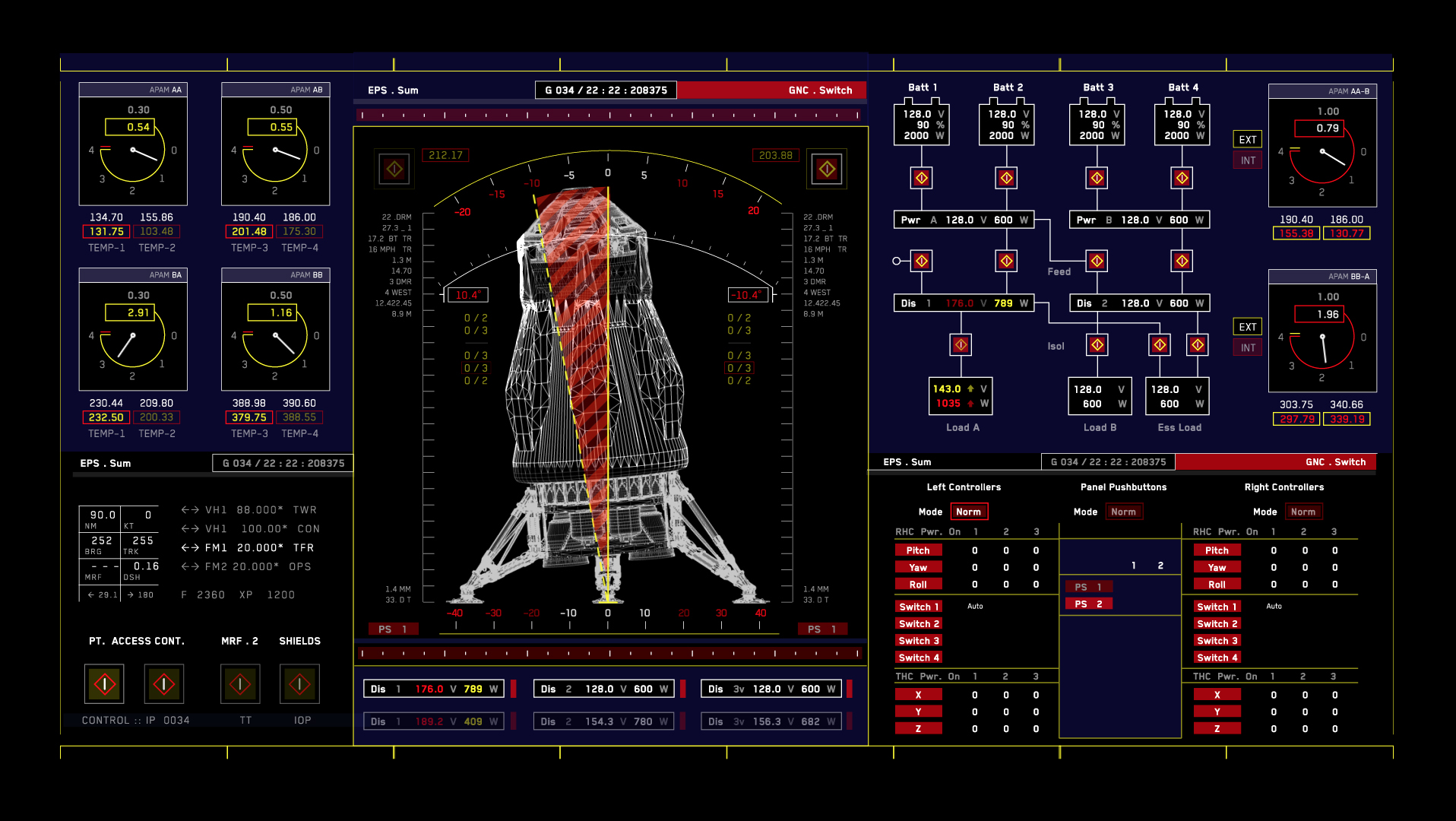
If you look closely, each screen and interface is a kind of patchwork of real-life data with visual storytelling devices. For example, a screen showing the weather on Mars is full of real data, but it’s mixed with a beautiful wide-angled “satellite” photo of a dust storm closing in on the hab.
Another screen shows the motion vectors of Hermes, courtesy of help from NASA — but with graphics designed by Territory.
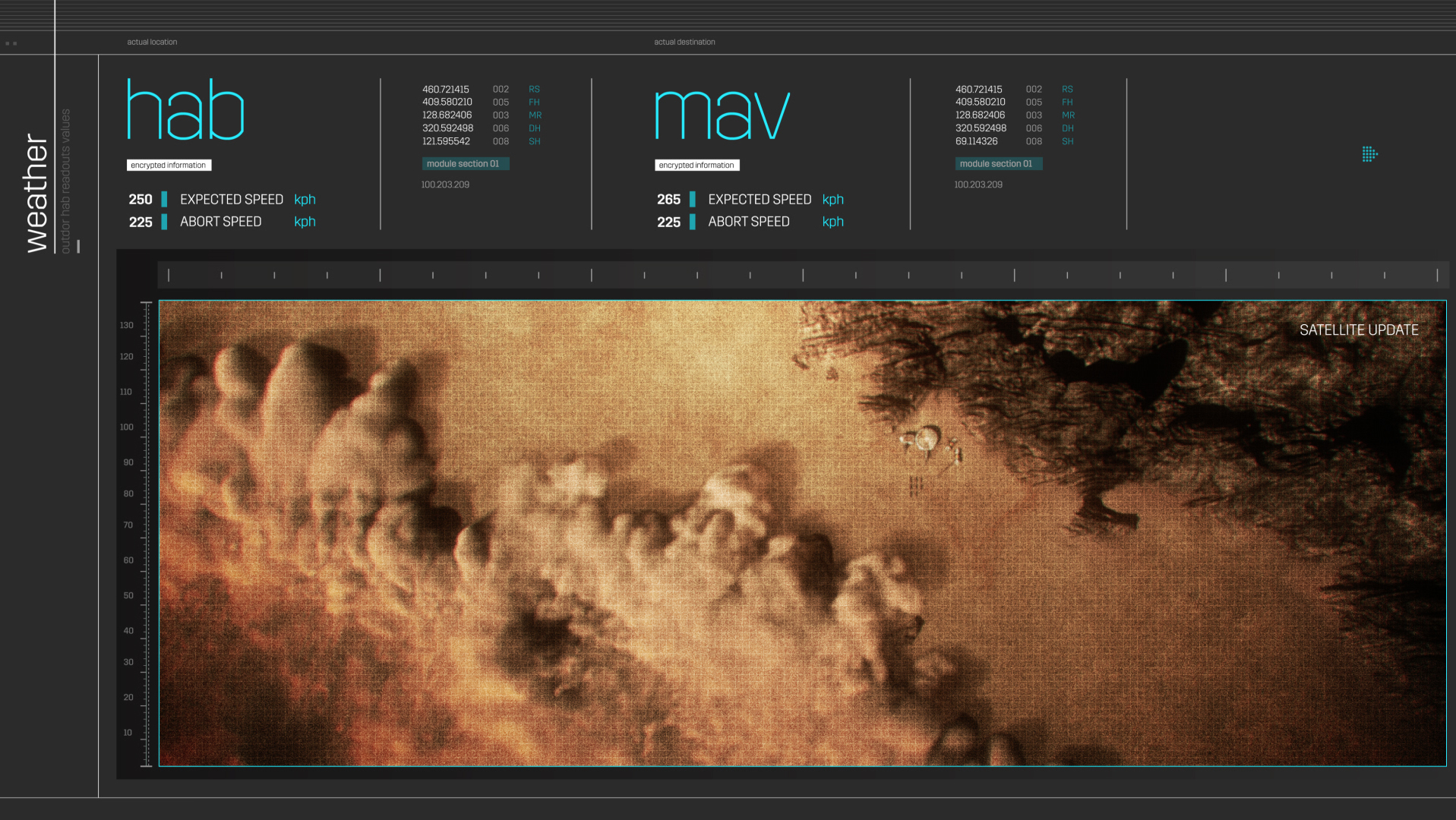
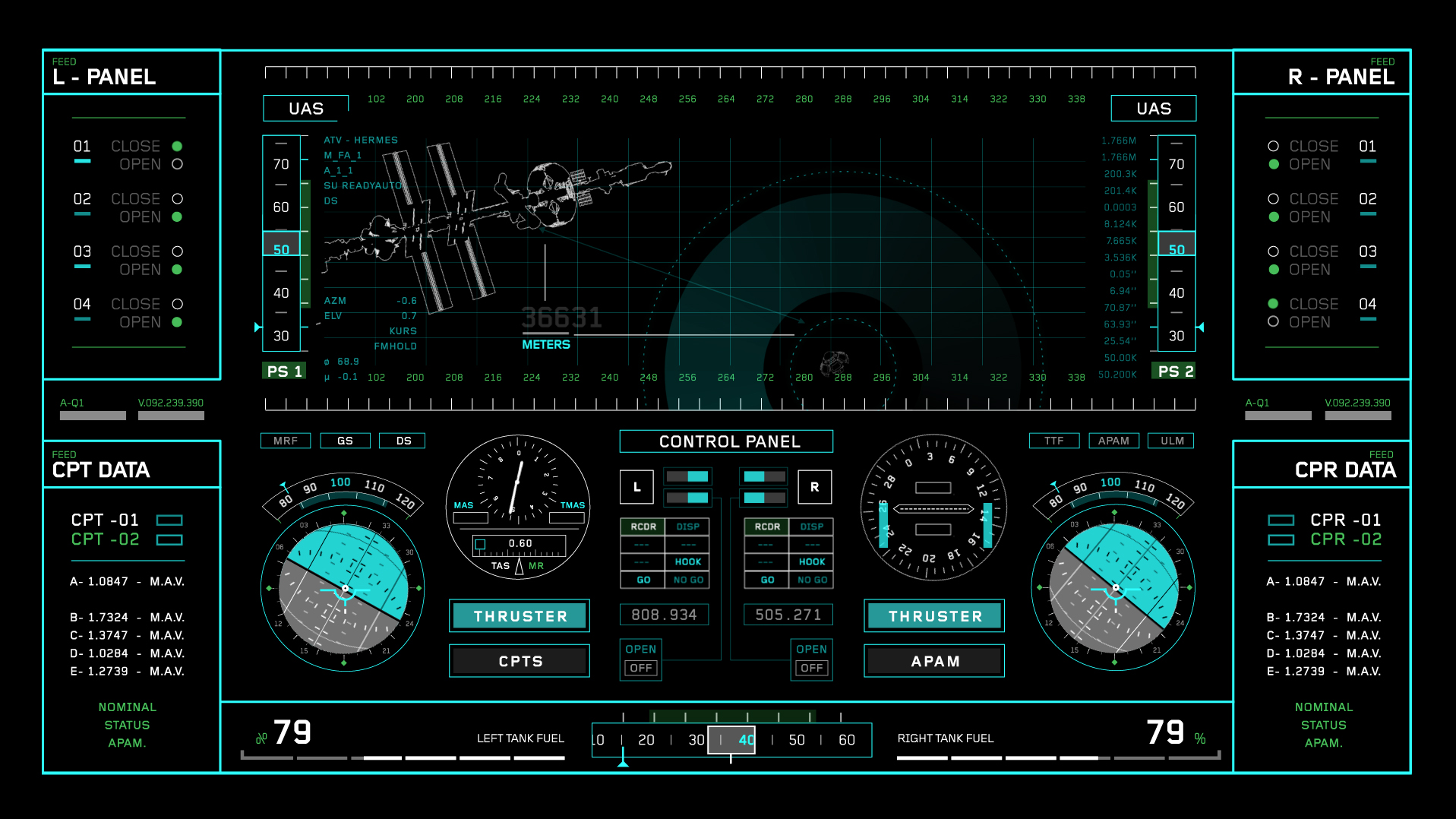
This kind of patchwork of real and fictional interfaces is everywhere in the film. Viewers today are more than familiar with astronauts streaming their work and their lives from space, and that trope shows up in The Martian as a way to introduce us to the characters. Mark Watney records a POV interview will all of his crew-mates, framed by Territory’s faux public live-streaming interface:
All Movies Are Time Capsules
As true-to-life as the film is, the technology and science of space travel are already making progress in ways that could make its storyline outdated before the time it takes place.
For example, one major challenge for Watney is communicating with NASA on a delay — but NASA is now confident that comms tech will develop to the point that there will be little to no delay by the time humans reach Mars. Likewise, the arm-based interface that Watney uses to communicate though his suit is a mixture of present-day technology and fictional advanced tech — right now, the limited dexterity of astronaut suit gloves would make it impossible to interact with a small touchscreen, as NASA pointed out to Territory.
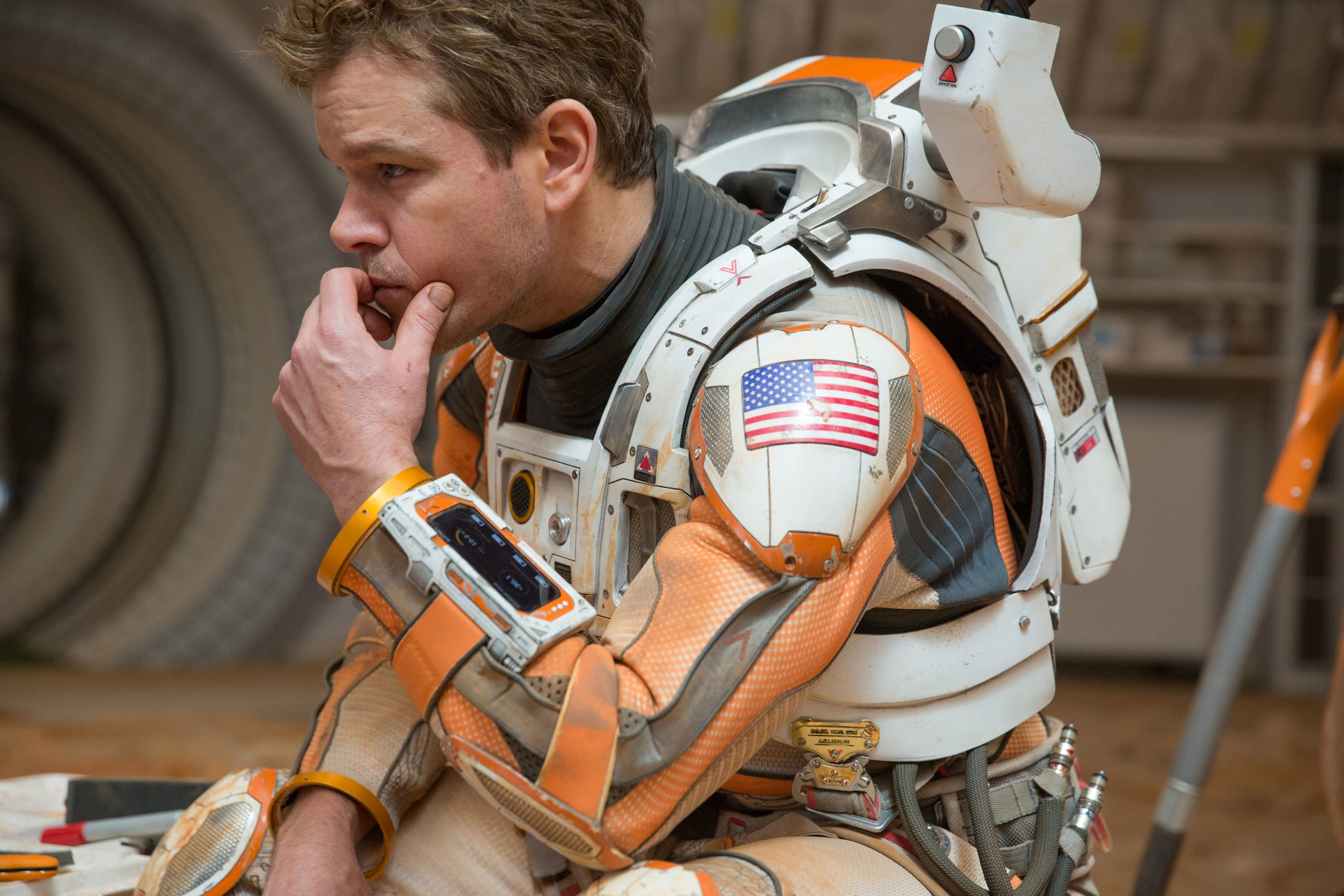
But for the sake of the story, some details like these — that may eventually prove unrealistic — were kept intact.
Other technological elements of the film are impossible to predict with any accuracy. Will the real Mark Watneys of the future, the future Mars explorers, use laptop-style screens on their missions, as the Hermes crew does in the film? Or will interface design have moved beyond crude screens, and into gestural and voice-based interaction modes?
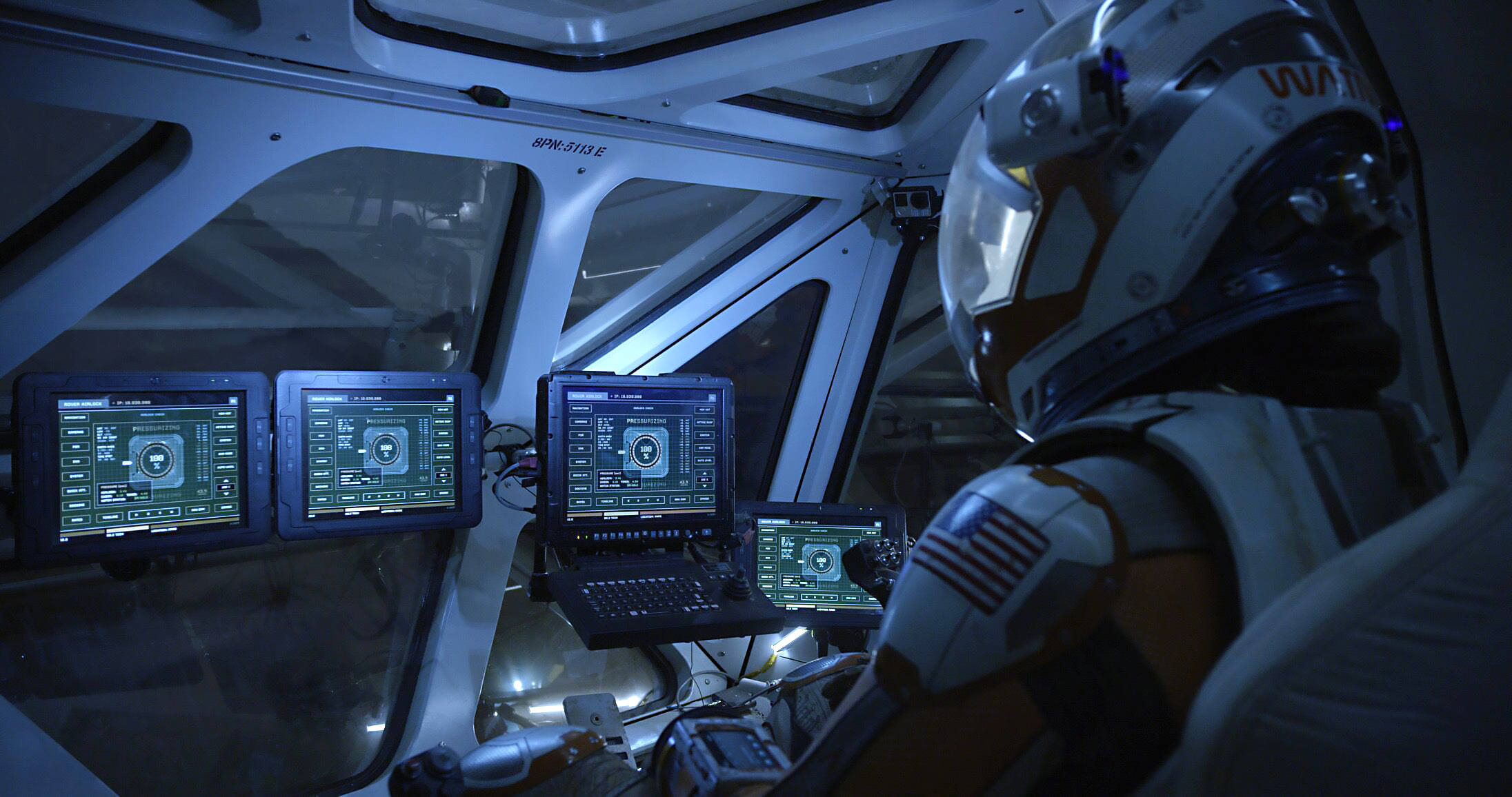
What Weir and Scott set out to do with The Martian — make a film about the future of NASA that’s absolutely realistic — is nearly impossible. And that’s OK: Wherever The Martian ends up landing on the spectrum of realism, 50 or 60 years from now, it’s a perfect depiction of our own reality, our thinking about Mars, and our understanding of how technology will develop over the coming decades.
“It did feel, at times, like we were running a very expensive simulation with NASA,” David Sheldon-Hick says, “and it was a privilege to be a part of it.”
